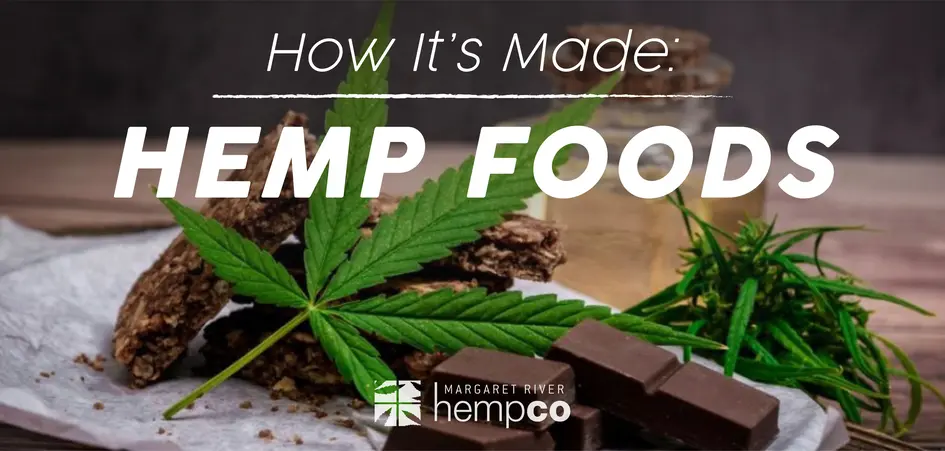
Of all the applications of hemp, one of the most popular is in the human diet. In stores around the country, you can now find varieties of hemp food.
These foods range from hemp seeds, to milks, and even teas. They offer many therapeutic and nutritional benefits, which partly explains their growing popularity.
Another reason is that people now understand the difference between hemp and marijuana. Both are variants of the Cannabis plant but they are distinguished by the concentration of Tetrahydrocannabinol (THC) within them. Hemp contains less than 0.3% of this substance and therefore cannot cause psychoactive effects.
Growing Hemp
The majority of the hemp industry was pulled apart in 1937 by the U.S Marijuana Tax act. In 1970 President Nixon listed hemp in Schedule 1 of the Controlled Substances Act as a way of squashing the hippie culture that was prevalent among anti-war people.
In 2013, Colorado was the first state to legalize industrial hemp and the Farm Bill of 2014 further freed farmers up to taking advantage of this crop. Since then, the movement has only continued to grow. Now, industrial Hemp has been legalised for growth on a federal level in the U.S.
Soil preparation for hemp cultivation is similar to what farmers might do for other grains. About 1000 to 1600 plants are planted per acre. It grows fairly short for grain and densely with minimal effort from farmers.
It is a hardy plant which requires little in the way of pest protection. It does not need a lot of water to grow either and fertilisers are often unnecessary.
Harvest hemp
This is right now the most difficult and poorly understood aspect of hemp cultivation. There are two techniques currently applied.
Harvesting hemp for food is complex as seeds mature at different times on different plants. The seeds lower on the plants also tend to mature earlier than those closer to the top. It is left to the farmer to decide at what time harvesting would result in minimal wastage.
Separate Seed from Plant
After harvesting, the seeds can be separated from the crop through a process known as threshing. This is achieved by mechanically loosening the parts of the plant that are edible. It may be done on the plant as a whole or in small quantities. Care must be taken to avoid damaging final products.
Dehull the Hemp Seed
Dehulling of hemp seeds can be manual or mechanised. The manual form can be performed with the aid of a table, wooden board, some water, a wooden mallet and a colander. While the mechanised dehulling involves the use of equipment that consists of an input hopper, spiral elevator, de-hulling & separating unit.
Other parts include an electric control cabinet, re-separator, pneumatic device for back-flowing materials and kernel collector. During this process, the shells of seeds are removed.
First the seeds are placed into the input hopper, then transported to the de-hulling and separating unit. The shells are then expelled with some left over unshelled seeds and kernels remaining. Then re-dehulling takes place through a back-flowing process.
Turn Whole Seed Into Food Products
These are the small brown seeds of the plant that are rich in fibre, protein and heart-healthy omega 3 and 6 fatty acids. They are rich in antioxidants and could be what you need in your diet to improve the health of your skin and joints.
Hemp flour is the bi-product of cold-pressed hemp seed oil. It is sieved through different filters to achieve a final product that has 33% protein concentration. It has low carbohydrate and is gluten-free, making it a great choice for baking healthy treats.
This is produced through a similar process as hemp flour. The only difference is that it is not defatted, so there is a high oil content. It is also more nutritious than the flour though not an ideal substitute for wheat. It can be taken for a boost in protein intake along with all the nutrition contained in the oils. Final product tends to be over 50% protein.
This is a vegan alternative to regular chocolate which usually contains dairy. Hemp chocolate is a combination of pure cocoa powder and crushed hemp seed. It is filled with plant-derived protein and fibre and has high concentrations of vitamins and minerals.
Store for Use
This really does depend on the form in which dietary hemp comes in. As for the seeds, once opened, they can last a year if placed in a refrigerator. If left in a cool, dry place, they could last up to 4 months.
And that’s how we make our hemp foods.
We hope that by breaking down the process of manufacturing hemp foods, you’ve learned a thing or two about how revolutionary this simple application of hemp could be for people and industries all around the world.